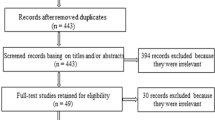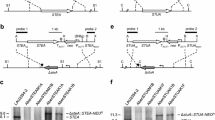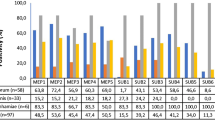Abstract
Dermatophytes are a group of closely related fungi that nourish on keratinized materials for their survival. They infect stratum corneum, nails, and hair of human and animals, accounting the largest portion of fungi causing superficial mycoses. Huge populations are suffering from dermatophytoses, though the biology of these fungi is largely unknown yet. Reasons are partially attributed to the poor amenability of dermatophytes to genetic manipulation. However, advancements in this field over the last decade made it possible to conduct genetic studies to satisfying extents. These included genetic transformation methods, indispensable molecular tools, i.e., dominant selectable markers, inducible promoter, and marker recycling system, along with improving homologous recombination frequency and gene silencing. Furthermore, annotated genome sequences of several dermatophytic species have recently been available, ensuring an optimal recruitment of the molecular tools to expand our knowledge on these fungi. In conclusion, the establishment of basic molecular tools and the availability of genomic data will open a new era that might change our understanding on the biology and pathogenicity of this fungal group.

Similar content being viewed by others
References
Ajello L. Natural history of the dermatophytes and related fungi. Mycopathol Mycol Appl. 1974;53:93–110.
Bhadauria V, Banniza S, Wei Y, Peng YL. Reverse genetics for functional genomics of phytopathogenic fungi and oomycetes. Comp Funct Genomics. 2009. doi:10.1155/2009/380719.
Alshahni MM, Shimizu K, Yoshimoto M, et al. Genetic and phenotypic analyses of calcineurin A subunit in Arthroderma vanbreuseghemii. Med Mycol. 2016;54:207–18.
Wang L, Ma L, Leng W, et al. Analysis of part of the Trichophyton rubrum ESTs. Sci China Ser C. 2004;47:389–95.
Wang L, Ma L, Leng W, et al. Analysis of the dermatophyte Trichophyton rubrum expressed sequence tags. BMC Genomics. 2006;7:255.
Zaugg C, Monod M, Weber J, et al. Gene expression profiling in the human pathogenic dermatophyte Trichophyton rubrum during growth on proteins. Eukaryot Cell. 2009;8:241–50.
Staib P, Zaugg C, Mignon B, et al. Differential gene expression in the pathogenic dermatophyte Arthroderma benhamiae in vitro versus during infection. Microbiology. 2010;156:884–95.
Yamada T, Makimura K, Satoh K, Umeda Y, Ishihara Y, Abe S. Agrobacterium tumefaciens-mediated transformation of the dermatophyte, Trichophyton mentagrophytes: an efficient tool for gene transfer. Med Mycol. 2009;47:485–94.
Yamada T, Makimura K, Hisajima T, Ito M, Umeda Y, Abe S. Genetic transformation of the dermatophyte, Trichophyton mentagrophytes, based on the use of G418 resistance as a dominant selectable marker. J Dermatol Sci. 2008;49:53–61.
Yamada Y, Maeda M, Alshahni MM, Monod M, Staib P, Yamada T. Flippase (FLP) recombinase-mediated marker recycling in the dermatophyte Arthroderma vanbreuseghemii. Microbiology. 2014;160:2122–35.
Alshahni MM, Yamada T, Takatori K, Sawada T, Makimura K. Insights into a nonhomologous integration pathway in the dermatophyte Trichophyton mentagrophytes: efficient targeted gene disruption by use of mutants lacking ligase IV. Microbiol Immunol. 2011;55:34–43.
Iwata A, Alshahni MM, Nishiyama Y, Makimura K, Abe S, Yamada T. Development of a tightly regulatable copper-mediated gene switch system in dermatophytes. Appl Environ Microbiol. 2012;78:5204–11.
Vermout S, Tabart J, Baldo A, Monod M, Losson B, Mignon B. RNA silencing in the dermatophyte Microsporum canis. FEMS Microbiol Lett. 2007;275:38–45.
Burmester A, Shelest E, Glöckner G, et al. Comparative and functional genomics provide insights into the pathogenicity of dermatophytic fungi. Genome Biol. 2011;12:R7.
Martinez DA, Oliver BG, Gräser Y, et al. Comparative genome analysis of Trichophyton rubrum and related dermatophytes reveals candidate genes involved in infection. mBio. 2012;3:e00259-12.
Mishra NC. DNA-mediated genetic changes in Neurospora crassa. J Gen Microbiol. 1979;113:255–9.
Tilburn J, Scazzocchio C, Taylor GG, Zabicky-Zissman JH, Lockington RA, Davies RW. Transformation by integration in Aspergillus nidulans. Gene. 1983;26:205–21.
Gonzalez R, Ferrer S, Buesa J, Ramon D. Transformation of the dermatophyte Trichophyton mentagrophytes to hygromycin B resistance. Infect Immun. 1989;57:2923–5.
Yamada T, Makimura K, Uchida K, Yamaguchi H. Reproducible genetic transformation system for two dermatophytes, Microsporum canis and Trichophyton mentagrophytes. Med Mycol. 2005;43:533–44.
Ferreira-Nozawa MS, Silveira HC, Ono CJ, Fachin AL, Rossi A, Martinez-Rossi NM. The pH signaling transcription factor PacC mediates the growth of Trichophyton rubrum on human nail in vitro. Med Mycol. 2006;44:641–5.
Fachin AL, Ferreira-Nozawa MS, Maccheroni W Jr, Martinez-Rossi NM. Role of the ABC transporter TruMDR2 in terbinafine, 4-nitroquinoline N-oxide and ethidium bromide susceptibility in Trichophyton rubrum. J Med Microbiol. 2006;55:1093–9.
Grumbt M, Defaweux V, Mignon B, et al. Targeted gene deletion and in vivo analysis of putative virulence gene function in the pathogenic dermatophyte Arthroderma benhamiae. Eukaryot Cell. 2011;10:842–53.
Kaufman G, Horwitz BA, Hadar R, Ullmann Y, Berdicevsky I. Green fluorescent protein (GFP) as a vital marker for pathogenic development of the dermatophyte Trichophyton mentagrophytes. Microbiology. 2004;150:2785–90.
Dobrowolska A, Stączek P. Development of transformation system for Trichophyton rubrum by electroporation of germinated conidia. Curr Genet. 2009;55:537–42.
Chakraborty BN, Patterson NA, Kapoor M. An electroporation-based system for high efficiency transformation of germinated conidia of filamentous fungi. Can J Microbiol. 1991;37:858–63.
Sánchez O, Aguirre J. Efficient transformation of Aspergillus nidulans by electroporation of germinated conidia. Fungal Genet Newsl. 1996;43:48–51.
Schiestl RH, Petes TD. Integration of DNA fragments by illegitimate recombination in Saccharomyces cerevisiae. Proc Natl Acad Sci USA. 1991;88:7585–9.
Sánchez O, Navarro RE, Aguirre J. Increased transformation frequency and tagging of developmental genes in Aspergillus nidulans by restriction enzyme-mediated integration (REMI). Mol Gen Genet. 1998;258:89–94.
Thon MR, Nuckles EM, Vaillancourt LJ. Restriction enzyme-mediated integration used to produce pathogenicity mutants of Colletotrichum graminicola. Mol Plant Microbe Interact. 2000;13:1356–65.
de Groot MJ, Bundock P, Hooykaas PJ, Beijersbergen AG. Agrobacterium tumefaciens-mediated transformation of filamentous fungi. Nat Biotechnol. 1998;16:839–42.
Gouka RJ, Gerk C, Hooykaas PJ, et al. Transformation of Aspergillus awamori by Agrobacterium tumefaciens-mediated homologous recombination. Nat Biotechnol. 1999;17:598–601.
Sugui JA, Chang YC, Kwong-Chung KJ. Agrobacterium tumefaciens-mediated transformation of Aspergillus fumigatus: an efficient tool for insertional mutagenesis and targeted gene disruption. Appl Environ Microbiol. 2005;71:1798–802.
Zhang X, Wang Y, Chi W, Shi Y, Chen S, Lin D, Jin Y. Metalloprotease genes of Trichophyton mentagrophytes are important for pathogenicity. Med Mycol. 2014;52:36–45.
Fincham JRS. Transformation in fungi. Microbiol Rev. 1989;53:148–70.
Clancy S. DNA damage & repair: mechanisms for maintaining DNA integrity. Nat Educ. 2008;1:103.
Wach A, Brachat A, Pöhlmann R, Philippsen P. New heterologous modules for classical or PCR-based gene disruptions in Saccharomyces cerevisiae. Yeast. 1994;10:1793–808.
Takahashi T, Masuda T, Koyama Y. Enhanced gene targeting frequency in ku70 and ku80 disruption mutants of Aspergillus sojae and Aspergillus oryzae. Mol Genet Genomics. 2006;275:460–70.
Choquer M, Robin G, Le Pêcheur P, Giraud C, Levis C, Viaud M. Ku70 or Ku80 deficiencies in the fungus Botrytis cinerea facilitate targeting of genes that are hard to knock out in a wild-type context. FEMS Microbiol Lett. 2008;289:225–32.
Walker JR, Corpina RA, Goldberg J. Structure of the Ku heterodimer bound to DNA and its implications for double-strand break repair. Nature. 2001;412:607–14.
Critchlow SE, Jackson SP. DNA end-joining: from yeast to man. Trends Biochem Sci. 1998;23:394–8.
Ninomiya Y, Suzuki K, Ishii C, Inoue H. Highly efficient gene replacements in Neurospora strains deficient for nonhomologous end-joining. Proc Natl Acad Sci USA. 2004;101:12248–53.
Yamada T, Makimura K, Hisajima T, Ishihara Y, Umeda Y, Abe S. Enhanced gene replacements in Ku80 disruption mutants of the dermatophyte Trichophyton mentagrophytes. FEMS Microbiol Lett. 2009;298:208–17.
Hande PM. Orchestration of telomeres and DNA repair factors in mammalian cells: implications for cancer and ageing. In: Madame Curie Bioscience Database [Internet]. Austin (TX): Landes Bioscience; 2000. http://www.ncbi.nlm.nih.gov/books/NBK6524/.
Kaster KR, Burgett SG, Ingolia TD. Hygromycin B resistance as dominant selectable marker in yeast. Curr Genet. 1984;8:353–8.
Dickman MB. Whole cell transformation of the alfalfa pathogen Colletotrichunm trifolii. Curr Genet. 1988;14:241–6.
Boeke JD, LaCroute F, Fink GR. A positive selection for mutants lacking orotidine-5′-phosphate decarboxylase activity in yeast; 5-fluoro-orotic acid resistance. Mol Gen Genet. 1984;197:345–6.
Gritz L, Davies J. Plasmid-encoded hygromycin B resistance: the sequence of hygromycin B phosphotransferase gene and its expression in Escherichia coli and Saccharomyces cerevisiae. Gene. 1983;25:179–88.
Turgeon BG, Garber RC, Yoder OC. Development of a fungal transformation system based on selection of sequences with promoter activity. Mol Cell Biol. 1987;7:3297–305.
Leboul J, Davies J. Enzymatic modification of hygromycin B in Streptomyces hygroscopicus. J Antibiot. 1982;35:527–8.
Pettinger RC, Wolfe RN, Hoehn MM, Marks PN, Dailey WA, McGuire JM. Hygromycin I. Preliminary studies on the production and biological activity of a new antibiotic. Antibiot Chemother. 1953;3:1268–78.
Cabañas MJ, Vázquez D, Modolell J. Dual interference of hygromycin B with ribosomal translocation and with aminoacyl-tRNA recognition. Eur J Biochem. 1978;87:21–7.
Singh A, Ursic D, Davies J. Phenotypic suppression and misreading Saccharomyces cerevisiae. Nature. 1979;277:146–8.
Beck E, Ludwig G, Auerswald EA, Reiss B, Schaller H. Nucleotide sequence and exact localization of the neomycin phosphotransferase gene from transposon Tn5. Gene. 1982;19:327–36.
Mullaney EJ, Hamer JE, Roberti KA, Yelton MM, Timberlake WE. Primary structure of the trpC gene from Aspergillus nidulans. Mol Gen Genet. 1985;199:37–45.
Alshahni MM, Makimura K, Yamada T, Takatori K, Sawada T. Nourseothricin acetyltransferase: a new dominant selectable marker for the dermatophyte Trichophyton mentagrophytes. Med Mycol. 2010;48:665–8.
Krügel H, Fiedler G, Smith C, Baumberg S. Sequence and transcriptional analysis of the nourseothricin acetyltransferase-encoding gene nat1 from Streptomyces noursei. Gene. 1993;127:128–31.
Cox GM, Rude TH, Dykstra CC, Perfect JR. The actin gene from Cryptococcus neoformans: structure and phylogenetic analysis. J Med Vet Mycol. 1995;33:261–6.
Perfect JR, Rude TH, Penning LM, Johnston SA. Cryptococcus neoformans TRP1 gene by complementation in Saccharomyces cerevisiae. Gene. 1992;122:213–7.
Fire A, Xu S, Montgomery MK, Kostas SA, Driver SE. Potent and specific genetic interference by double stranded RNA in Caenorhabditis elegans. Nature. 1998;391:806–11.
Li L, Chang SS, Liu Y. RNA interference pathways in filamentous fungi. Cell Mol Life Sci. 2010;67:3849–63.
Kadotani N, Nakayashiki H, Tosa Y, Mayama S. RNA silencing in the phytopathogenic fungus Magnaporthe oryzae. Mol Plant Microbe Interact. 2003;16:769–76.
Barton LM, Prade RA. Inducible RNA interference of brlAbeta in Aspergillus nidulans. Eukaryot Cell. 2008;7:2004–7.
Goldoni M, Azzalin G, Macino G, Cogoni C. Efficient gene silencing by expression of double stranded RNA in Neurospora crassa. Fungal Genet Biol. 2004;41:1016–24.
Monteiro MC, De Lucas JR. Study of the essentiality of the Aspergillus fumigatus triA gene, encoding RNA triphosphatase, using the heterokaryon rescue technique and the conditional gene expression driven by the alcA and niiA promoters. Fungal Genet Biol. 2010;47:66–79.
Sadowski PD. The Flp recombinase of the 2-microns plasmid of Saccharomyces cerevisiae. Prog Nucleic Acid Res Mol Biol. 1995;51:53–91.
Sternberg N, Hamilton D. Bacteriophage P1 site-specific recombination. I. Recombination between loxP sites. J Mol Biol. 1981;150:467–86.
Broach JR, Guarascio VR, Jayaram M. Recombination within the yeast plasmid 2 μm circle is site-specific. Cell. 1982;29:227–34.
Kopke K, Hoff B, Kück U. Application of the Saccharomyces cerevisiae FLP/FRT recombination system in filamentous fungi for marker recycling and construction of knockout strains devoid of heterologous genes. Appl Environ Microbiol. 2010;76:4664–74.
Kopke K, Hoff B, Bloemendal S, Katschorowski A, Kamerewerd J, Kück U. Members of the Penicillium chrysogenum velvet complex play functionally opposing roles in the regulation of penicillin biosynthesis and conidiation. Eukaryot Cell. 2013;12:299–310.
Belteki G, Gertsenstein M, Ow DW, Nagy A. Site-specific cassette exchange and germline transmission with mouse ES cells expressing phiC31 integrase. Nat Biotechnol. 2003;21:321–4.
T. rubrum Expression Database. http://www.mgc.ac.cn/TrED. Retrieved 4 Feb 2016.
Dermatophyte Comparative Database. http://www.broadinstitute.org/annotation/genome/dermatophyte_comparative. Retrieved 4 Feb 2016.
Author information
Authors and Affiliations
Corresponding author
Rights and permissions
About this article
Cite this article
Alshahni, M.M., Yamada, T. Genetic Manipulations in Dermatophytes. Mycopathologia 182, 33–43 (2017). https://doi.org/10.1007/s11046-016-0039-y
Received:
Accepted:
Published:
Issue Date:
DOI: https://doi.org/10.1007/s11046-016-0039-y




